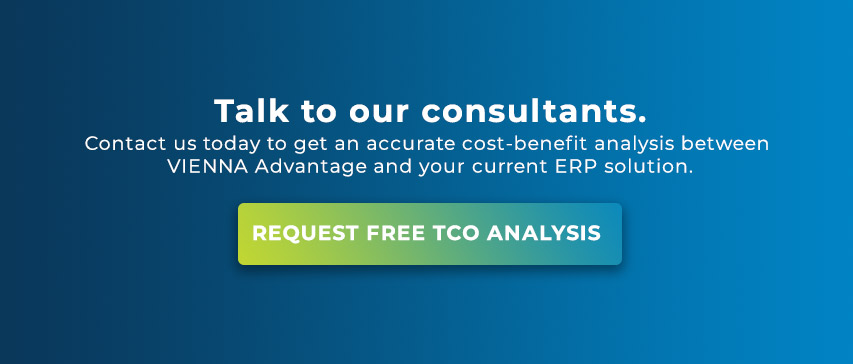
The entire education sector – from primary education to doctoral studies has been greatly impacted by the Covid-19 pandemic. The ones that turned to large-scale digital transformation have thrived, while those that did not adapt have struggled to perform. One of the most common questions we hear from our customers and prospects is, “What truly constitutes digital transformation for an educational institution?” Is it the implementation of an e-learning application? Or is it about looking for ways to adopt technologies such as Artificial Intelligence and Machine Learning? Before we turn to this question, let us take a step back and examine the various stakeholders in the ecosystem of an educational institution.
Looking at the campus life, there are three key stakeholders that are impacted by the digital transformation in education:
- Students
- Faculty
- Administration
While the above are the primary stakeholders in an educational institution, there are other important participants that have as strong a stake in the welfare of the institution as the above three.
- Alumni
- Parents and guardians
- Prospective employers
#1 Students and the Digital Transformation in Education

Students are the primary reason educational institutions exist. For a generation that is so-called “digital native”, students expect connectedness in every aspect of their student life. Whether it is managing coursework, to participating in social and professional activities on campus, students expect to be able to manage it all digitally, preferably through a mobile application.
The student experience on campus is turning to some very interesting usage of cutting-edge technology. With distance learning forced upon students, they rapidly adapted to newer ways of accessing learning material. This has accelerated the use of visual technologies such as Augmented Reality (AR). To engage better with each other, and with the instructor, students and their educators are using various in-class collaboration applications that provide richer interactions and make remote learning easier.
Although these technologies may seem novel, they are eventually served by a central learning management system (LMS), which is a part of the core backend system of an educational institution.
To manage their life on campus, students are looking for single-access digital tools which allow them to perform several tasks: review their class schedule, manage social and professional club events, reserve and use laboratory and library facilities, digitally pay for cafeteria purchases, and review and submit coursework. Advanced Student Management Application such as the one from Onfinity offers a simple, intuitive mobile application for students to manage all these activities. Additionally, Onfinity mobile application can be easily integrated to provide learning content on mobile devices, making truly remote learning possible.
#2 Faculty and the Digital Transformation in Education

Educational institutions vie for qualified faculty. For most cases, the reason is to provide quality education to students, but several institutions attract prominent scholars to strengthen their research portfolios. Academicians prefer to focus on teaching and research, therefore any digital transformation initiative targeted towards them should help them carry out these activities effortlessly.
The most demanding task for faculty is to manage the entire process of planning lessons for a cohort, developing and managing versions of learning content, and planning and performing student evaluations. Onfinity Education ERP provides a solution for all the needs of a faculty. With its embedded Document Management System (DMS), faculty can store, share, and manage various versions of learning material. When the program office assigns faculty to student cohorts, faculty can use Onfinity mobile application to interact and engage with students – either via one-on-one correspondence or via the broadcast functionality.
One of the most crucial areas for the teaching staff is the matter of student evaluations. Onfinity Education ERP has a comprehensive set of capabilities to support different methods of student evaluation. From Outcome-Based Learning (OBL) to mixed-mode learning, the application supports various learning and evaluation methods. Onfinity Education ERP can be configured to adapt to the institution’s approach to pedagogy.
#3 Administration and the Digital Transformation in Education

The institution’s administration is the nerve center that ensures the smooth functioning of the institution. They would be the heaviest users of digital solutions and their priorities lie in improving the efficiency, transparency, and audit of all processes.
Running an educational institution can be an administrative nightmare. The sheer complexity of managing the entire student lifecycle – from admission to graduation and everything in between calls for impeccable discipline and a sharp oversight on key metrics.
Onfinity Campus Management Solution has a comprehensive portfolio of capabilities that can help administrators manage the day-to-day running of the institution. Student outreach and management of student admission are some of the most complex sets of activities. Onfinity enables admissions officers to design, run and monitor a multi-channel student recruitment campaign. Institutions can use several channels, such as their website, emails, SMS, telephony, and popular messaging applications such as WhatsApp to register interest from prospective students. These students can then be qualified across an admissions funnel and eventually offered admission.
Institutions could have several categories of fees – from tuition fees to boarding and lodging, IT infrastructure fees, to library and laboratory fees. Onfinity Education ERP allows institutions to define these fees across several categories and define different General Ledger accounts against each fee category. Upon admission, enrolled students may pay these fees through various means – few students may avail of education loans, while others may be sponsored through a scholarship. The Fee Management module in Onfinity is tightly integrated with the Finance and Accounting module enabling easy and simple methods to define these fee types. Moreover it offers native integration with the Accounts Receivable (AR) module which provides a seamless mechanism to manage and run various reports on student fee management.
The Registrar’s Office function of managing academic records of students and alumni is a critical task of an institution’s administration. Onfinity Education ERP has a dedicated module for management of these areas, where the application is able to manage assignments of students to courses, maintain their academic records and issue certificates and notices.
Managing these processes is key; a crucial part of any digital transformation initiative in education is the ability to run detailed analytics and gain actionable insights from them.
With Onfinity state-of-the-art analytics platform, educational institutions can run routine MIS reports, build dashboards with visually intuitive elements to examine trends, and catch exceptions in the form of data outliers.
Besides these 3 key stakeholders, there are three other important participants that have as strong a stake in the welfare of the institution as the above three:
#4 Alumni
Alumni constantly look for opportunities to give back to their institutions and they are always prepared to contribute in any way that enhances the reputation of their alma mater. Moreover, alumni often contact institutions for several administrative tasks such as requests for transcripts and other certificates and prefer these to be automated.
#5 Parents and Guardians
Parents and guardians of students form an important part of the educational institution, especially for those in school and undergraduate courses. They expect transparency and the ability to monitor the curricular and co-curricular activities of their wards. Digital solutions are very useful in helping them stay abreast of the activities of their wards.
#6 Prospective Employers
Institutions offering higher education strive for appropriate placement of their students in the workforce. Managing prospective employers, whether it is events such as job fairs, or nurturing relationships with newer employers, the institution administration is always looking for ways to improve employment prospects for their students.
Act While There’s Still Time
Today, digital disruption is affecting practically every educational institution, and hence, visionary executives are leaning towards transforming their organizations to stay relevant in their markets and to enjoy a competitive advantage. To most companies, this involves the modernization of their core ERP platform and shifting it to the cloud for enhanced management of costs, better agility, and quicker access to innovations.
With Onfinity, educational institutions get a comprehensive portfolio of applications to manage the entire operations and provide an excellent experience to all stakeholders involved. By choosing Onfinity as the preferred partner in their digital transformation journey, educational institutions can benefit from a robust and scalable application that will make their institution an efficiently run one.
